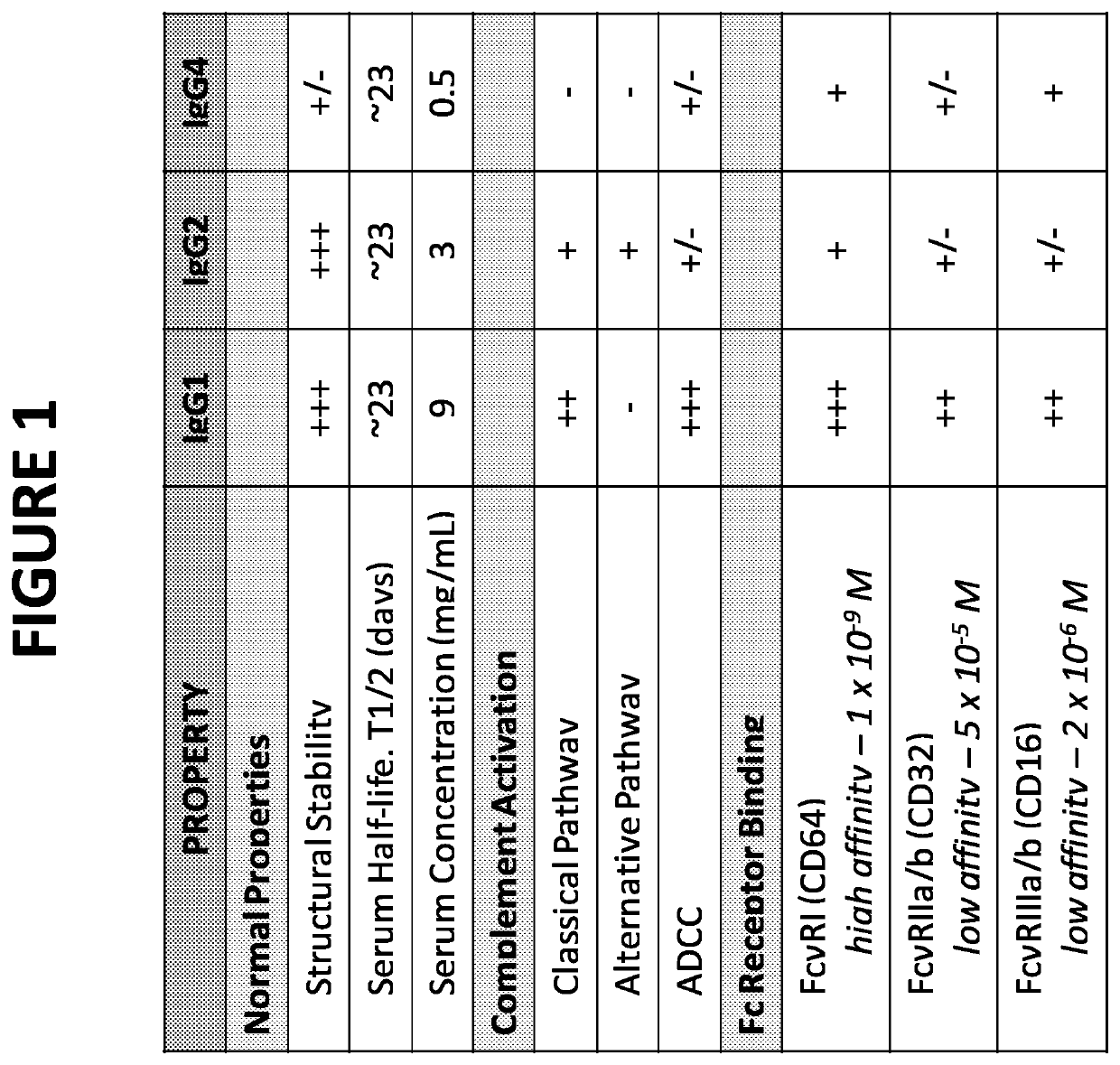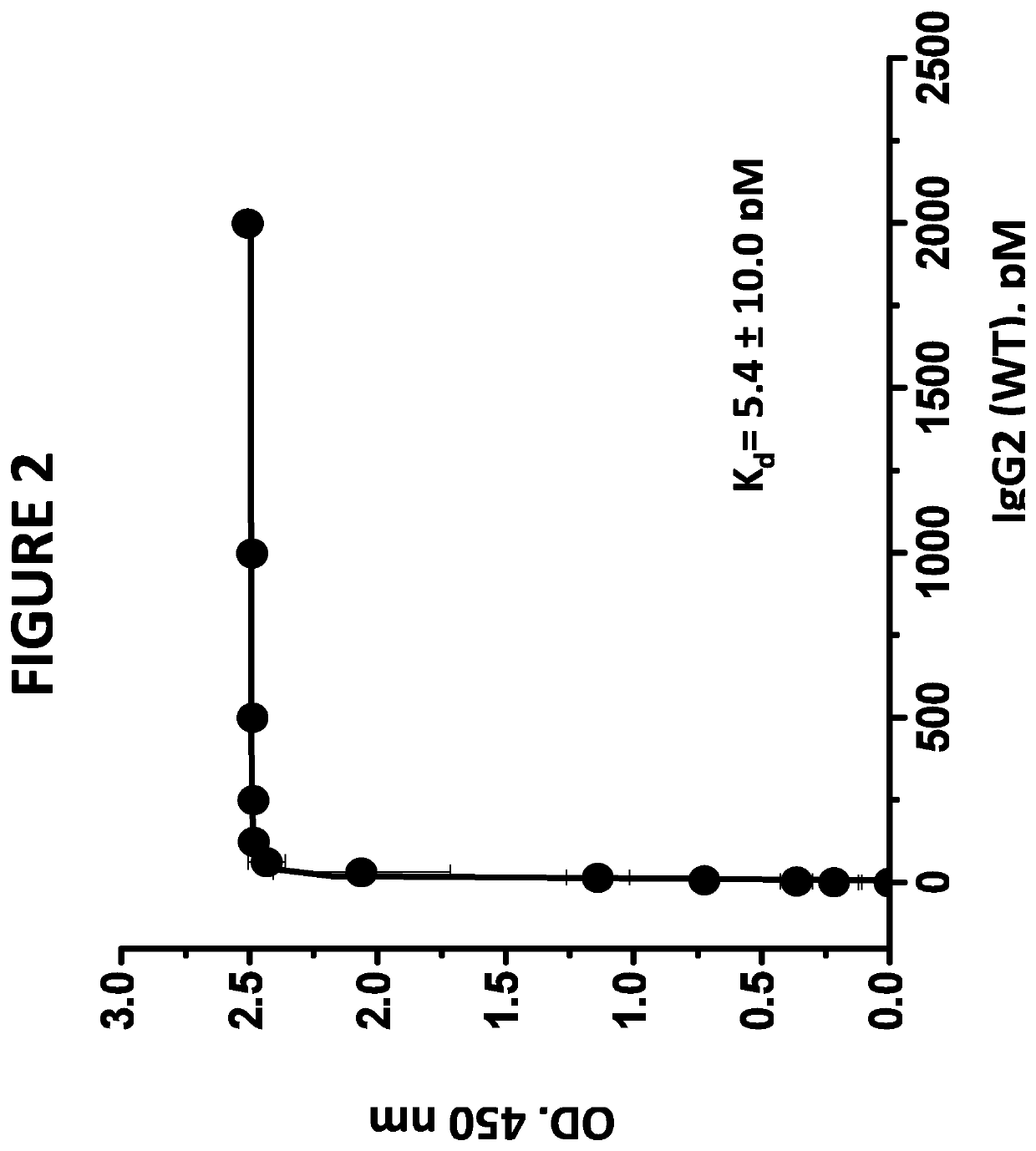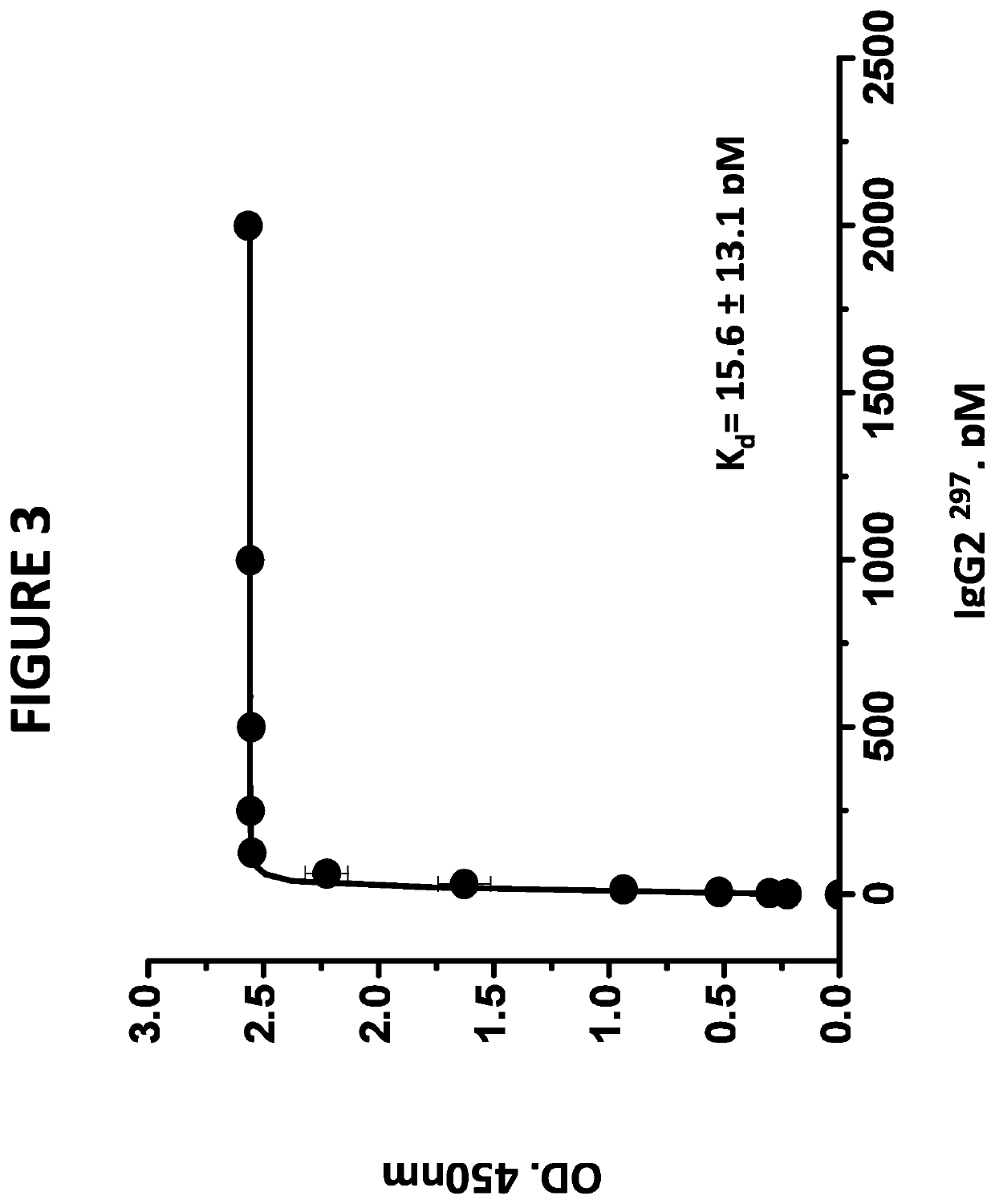Aglycosylated anti-properdin antibodies
a technology of antiproperdin and glycosylated antibodies, which is applied in the field of glycosylated antiproperdin antibodies, can solve the problems of reducing the effector function, reducing the half life of the antibody, and the method is not ideal in the context of therapeutic antibodies with more chronic indications
- Summary
- Abstract
- Description
- Claims
- Application Information
AI Technical Summary
Benefits of technology
Problems solved by technology
Method used
Image
Examples
example 1
Binding Affinity to the Target Protein Properdin
[0099]The wild type IgG2, aglycosylated IgG2, and aglycosylated IgG1 / IgG2 Hybrid antibodies bind the target protein with high affinity. In a typical assay, polystyrene microtiter plates were coated with human factor P, (Complement Technologies, San Diego, Calif.) in phosphate buffered saline (PBS) overnight. After aspirating the factor P solution, wells were blocked with PBS containing 1% bovine serum albumin (BSA) (Sigma Chemical Company, St. Louis, Mo.) for 2 hours at room temperature. Wells without factor P coating served as background controls. Aliquots of various concentrations of the antibodies under investigation in blocking solutions were added to factor P-coated wells and plates were allowed to sit for 1 hour to allow the monoclonal antibodies to bind the substrate-bound factor P. The plate was rinsed with PBS and factor P-bound monoclonal antibodies were detected by the addition of peroxidase-conjugated goat anti-human monocl...
example 2
Bioassay to Demonstrate Inhibition of Alternative Pathway Activation (AP)
[0101]To assess the ability of the exemplary compounds of the present invention to inhibit AP activation in an in vivo-like system, an erythrocyte hemolysis assay was used. Rabbit red blood cells (rRBCs) were incubated with normal human serum (NHS) in an AP enabling buffer. The presence of rRBCs (“the foreign body”) preferentially induces activation of the AP, resulting in C5b-9 deposition on the erythrocytes and ultimately causing cell lysis. The extent of cell lysis is detected based on light scattering at optical density of 700 nm.
[0102]Introducing rabbit Erythrocytes (rRBC) into 10% human serum (with Mg2+ / EGTA) represents the introduction of a foreign cell surface which initiates the alternative complement cascade. Activation of the AP results in the formation of MAC which causes lysis of the foreign cells (the rRBCs). The selected antibodies of the present invention prevent lysis of these erythrocytes. Thi...
example 3
The Aglycosylated Antibodies do not Inhibit or Activate the Classical Pathway
[0104]IgG2 (unaltered) is known to activate the complement pathway according to the known literature—see FIG. 1. To test the effects of the antibody on the CP, antibody-sensitized, sheep erythrocytes (sRBC) were incubated in 1% normal human serum in CP buffer (Ca2+ / Mg2+). These sRBCs activate the CP, which induces lysis of cell membranes. Lysis of the cell membranes results in a gradual decrease in light scattered by cells. When an alternative pathway specific antibody of the present invention was incubated with sRBCs at 37° C. in 1% NHS with a buffer containing Ca2+ and Mg2+ (“the CP buffer”) no effect on hemolysis was observed within the time period beginning with the start of hemolysis and concluding with maximal hemolysis. This implies that the alternative pathway neutralizing IgG2 antibody does not affect CP hemolytic activity in NHS (data not shown). Light scatter (due to lysis of intact cells) was me...
PUM
| Property | Measurement | Unit |
|---|---|---|
| pH | aaaaa | aaaaa |
| temperature | aaaaa | aaaaa |
| covalent | aaaaa | aaaaa |
Abstract
Description
Claims
Application Information
 Login to View More
Login to View More - R&D
- Intellectual Property
- Life Sciences
- Materials
- Tech Scout
- Unparalleled Data Quality
- Higher Quality Content
- 60% Fewer Hallucinations
Browse by: Latest US Patents, China's latest patents, Technical Efficacy Thesaurus, Application Domain, Technology Topic, Popular Technical Reports.
© 2025 PatSnap. All rights reserved.Legal|Privacy policy|Modern Slavery Act Transparency Statement|Sitemap|About US| Contact US: help@patsnap.com



